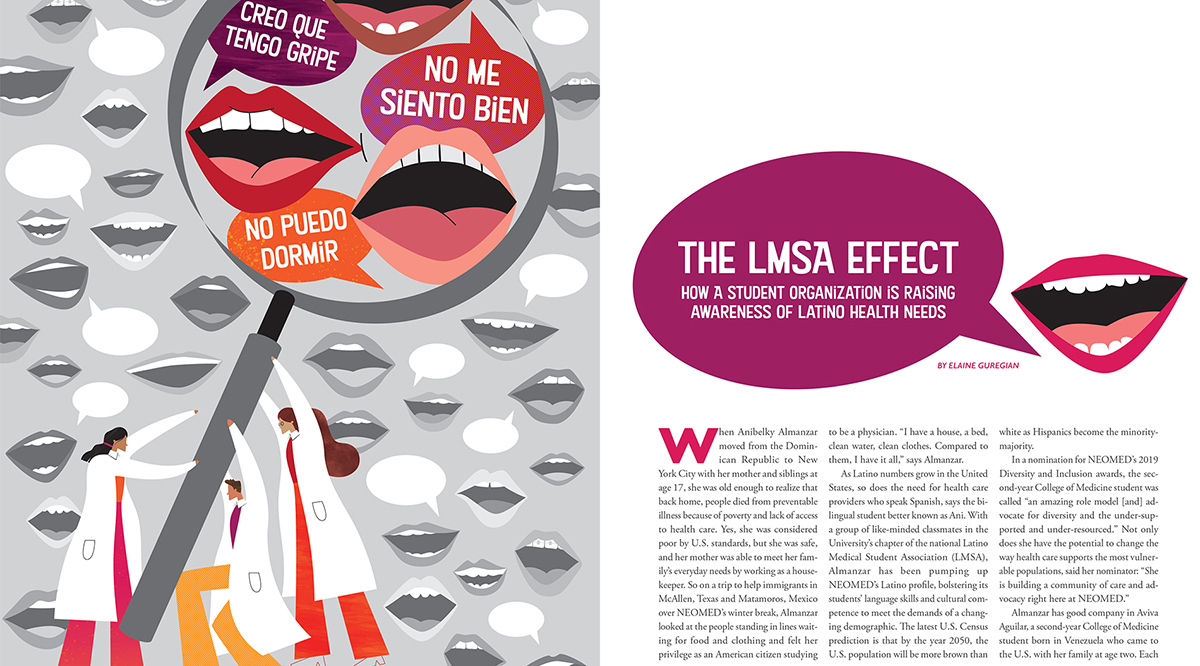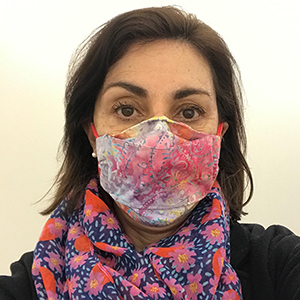
“The LMSA Effect” by Elaine Guregian
Northeast Ohio Medical University
As the number of Latinx people grows in the United States, so does the need for health care providers who speak Spanish and are culturally prepared to serve them. Medical students Anibelky Almanzar and Aviva Aguilar have led members of the Northeast Ohio Medical University chapter of the national Latino Medical Student Association (LMSA) to build language skills, increase cultural competence, and provide hands-on help to Latinos in Northeast Ohio.
Over NEOMED’s history (not quite 50 years), enrollment of Latino/Hispanic students in its College of Medicine has always been low. The Class of 2024, for example, is 48% White, 32% Asian, 7% Hispanic/Latino and 3% Black. The national LMSA hadn’t had a student chapter at NEOMED until a student named Carmen Javier enrolled at NEOMED in 2017 and founded one. In just three years, this student organization has made a disproportionately large impact on the University and community—hence, the article’s title, “The LMSA Effect.”
The time seemed right to highlight these impressive grassroots efforts by students to better prepare their classmates as health care providers and to demonstrate that although the number of Latino students at NEOMED may be small, their concerns matter in a big way.
“When Anibelky Almanzar moved from the Dominican Republic to New York City with her mother and siblings at age 17, she was old enough to realize that back home, people died from preventable illness because of poverty and lack of access to health care. Yes...”

What was the most impactful part of your award-winning entry?
The students interviewed for this story proved again what an inspiring difference just a few people can make to effect positive change.
What is one thing you learned from this experience?
The students I interviewed stood out repeatedly during their first two years of medical school. As they continued to distinguish themselves, I was moved by how they consistently supported each other, even recommending each other for competitive awards.
What challenge did you overcome?
The students had done impressive work in so many areas that my challenge was to distill their accomplishments into a relatively brief magazine article.
What was the biggest challenge in writing about this topic?
The students of the Latino Medical Student Association had done impressive work in so many areas that my challenge was to distill their accomplishments into a relatively brief magazine article.
Contact
Elaine Guregian, eguregian@neomed.edu